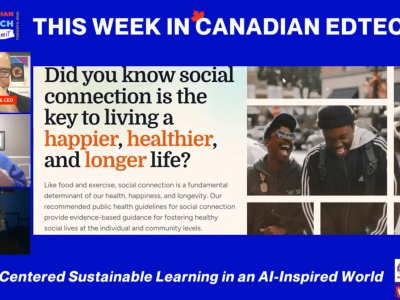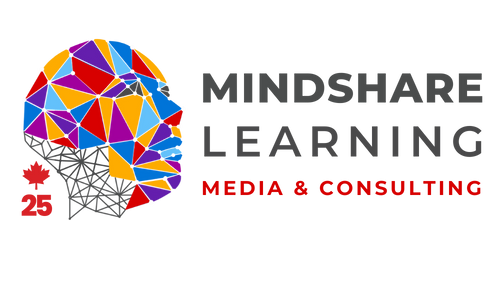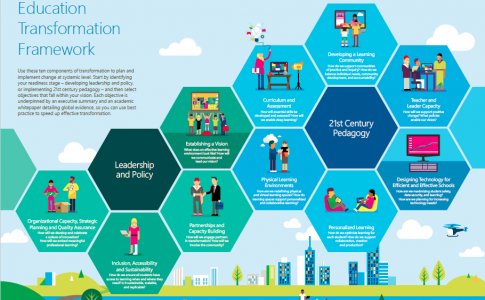If you’re a new teacher, you’re no longer a neophyte, and if you’re a veteran teacher you’re ‘back in the saddle’ so to speak. No doubt you’ve put in your first day back at school and you’re excited, nervous, anxious and perhaps a bit weary after getting back to the classroom for this brand new school year. This new year brings with it new ideas about how you might use technology in innovative ways, and perhaps a bit of trepidation with the anticipation of new challenges that are always a part of the landscape in the journey to an innovative pathway through the forest of education, especially a 21st Century education.
I’ve put together five things you should consider as you plan for your new school year using technology in your program. These ideas are not comprehensive by any means. In fact, for the veteran perhaps they’ll act as a reminder of what it is that you should be focused on as you approach this new year with the various tools that have either been discovered for the first time, or newly rediscovered for what you could do in a new and innovative way in your classroom program. And for the inexperienced or beginning teacher these ideas can help steer you in the right direction when you begin to immerse yourself in the broad horizon of technology. You’ll find some of these ideas grandiose. I don’t apologize for that simply because thinking about big ideas in technology leads to a more comprehensive vision; one that encompasses more than simply thinking about a tool and a process. Here they are in no particular order:
1. Choose to focus on using one cloud-based tool to expand your horizons pedagogically, critically and socially.
As teachers, and especially teachers interested in using technology to reach our students in new and diverse ways, we are inundated with a plethora of ‘this’ or ‘that’ new thing or technology to adopt in our classroom programs. Let me suggest that instead of jumping headlong into the deluge of this ‘clutter’ make a rational choice to pick one well-respected cloud-based application to deeply integrate into your classroom program. And by ‘deeply integrate’ I mean to use in such a way as to become a critical user. Make suggestions for improvement from your perspective. Refuse to allow the limits of program’s design to keep you mired in something that could be so much better if the company would see the merits or pitfalls of a program’s design or framework. Get involved! Make the program better by contacting the developers and getting involved in their forums. The take-away for you will be a better understanding of your presuppositions through critical dialogue while collaborating – yes, that means ‘co-labouring’ – with fellow teachers and entrepreneurs to make something excellent instead of ‘good enough’. Teachers and edtech entrepreneurs need to work together in synergy in order to create that one technology that can make a real difference in teaching and learning. This is not a new idea but it’s one that is underutilized!
You will also develop a network of ‘critical friends’ who you can now contact for further insights into developing your classroom program into one that is exemplary. And moreover you’ve taken a leap into the great ‘cloud beyond’ which will help you better understand the nuances of what 21st Century education is moving towards. The whole state of technology in education must become more holistic rather than the fragmented, specialist view it has followed in the past. The groups who can make this happen are the consumers – the teachers, and their students – who act as critical users because in the end they’re the reason the products are being developed in the first place.
Suggested Technology to Explore: Edsby
2. Make your technology solutions real-world and real-convincing.
Make every effort to adopt technology as a powerful supporter in your quest to adopt and develop critical thinking, creativity, collaboration and communication skills among your students in order to solve real-world problems. This may involve a good bit of cognitive dissonance so to speak however it will push your use of technology to a new level. Gone are the days where we use technology for technology’s sake; we are on a quest to ensure that our students are equipped to fully engage all of their faculties as world-citizens. This is ultimately our focus because as this world evolves the competition to stay at the top and develop a civilization and economy that is both fluid and comprehensive requires teachers who are pushing the limits in the classroom, at all levels. Technology can help take you to this level and can enhance your ability as a teacher to move your students ‘out of the classroom’ into the world beyond. What real-world problems can you tackle using an inquiry based approach that can be catapulted to the next level using technology? Let me tell you that real-world problems become real convincing. Students, parents and your fellow pedagogues will be impacted and you’ll become ever more convinced that your program can make a difference.
And real world citizens need real-world problems that can be fully explored via the power of technology – technology is so often underused and under-utilized in real-world ways. How many times have we seen young people solving real world problems because they have fresh perspectives, and perhaps are less constrained by a certain way of thinking? Why not expose our students to some of the problems that our world faces, from famine and war to issues of inequality and poverty at every level. Technology can only enhance this because it provides students with the power to communicate, collaborate and think creatively about these issues and others. You can be rest assured they’re already aware of these problems. Students today are more world citizens than perhaps we think. Simply ask your class how many used Skype to communicate with relatives and family members a world away.
Suggested Technology to Explore: Taking It Global
3. At the school level find one technology that can be used to solve one school-wide learning need or problem and lead it.
The recent EQAO results in Ontario show that math teaching and learning continue to be areas of weakness in education in this province. According to the Minister of Education elementary teachers are in need of more training when it comes to math pedagogy. How can technology bridge the gap here? How can we use technology to help teachers teach math more cogently and with better results?
I know of one school in the Toronto District School Board that used SMART Board technology to improve their math scores, and not just in a small way. Further, in the true spirit of collaboration and problem solving this particular school led a broader group of schools in the goal of spreading their pedagogical expertise in interactive whiteboard technology and math achievement. They saw the power of the technology and they took it to the next step – they made it real with real results.
This is only one idea. There are other technologies that could be explored in different ways in different curriculum areas to enhance learning and increase achievement. Spend some time with your school team and develop a school-wide plan to address some pressing issue at your particular school and become a leader. Share your results!
Suggested Technology Connection: Android Tablets
4. Make an effort to attend a Canadian or International Educational Technology Conference or Related Conference.
I used to attend as many different technology conferences as I could. It wasn’t so much about the technology per se but it was about the synergy and the excitement and collegiality that could be gained from meeting with and sharing ideas with other educators. I gained new ideas, re-framed old ones and developed new possibilities.
I have now expanded my horizons so to speak. I’ve traveled to several continents exploring what other educators in other parts of the world are doing with technology. How can I learn? What can I share and how can we come together to make our world an even better place? What are my presuppositions about how I teach and learn with technology? Am I missing something? What can I bring back to share with my staff and with my students?
There are many different technology conferences you can attend. Plan to attend one! Make it a priority! And watch your teaching grow richer and more diverse. Plan now!
Suggested Conferences: Local Edtech Conference, BETT in London, ISTE in Atlanta,
5. Adopt Wireless Access as the De facto Standard for Connecting in Your School – Move Away from Standalone Computing and Use Your Smartphone!
This is really a no-brainer so to speak, however it’s always interesting to me to see schools and teachers who are still beset by this mentality. The underlying thought is that I need to think and do at a certain spot at a certain time in order to become productive. Move out of this mindset and use your device(s) to explore thinking all the time, anywhere and with power and make use of your connection to the ‘world’ out there via the Wi-Fi connections at your school or district location. Use your smartphone to connect, brainstorm, collaborate and produce your next lesson. Give it a try. Did you get this amazing idea in the middle of the hall? Voice record it and start putting together the schema for this idea on your smartphone. Create a group chat with other teachers using BBM (this BlackBerry technology will soon be available to ALL platforms. Speaking of Blackberry they have the ability to create secure communications within a certain building or group by ID with BB 10). Model for your students what can be done with a Smartphone that in most cases is many, many times more powerful than your first computer. And with the advent of Phablets (phone + tablet (bigger screen and often more powerful)) you can’t complain that you don’t have the screen real-estate. All of the above is doable, and it’s powerful. In fact, this idea could be used to power the third idea above!
Suggested Technology: Smartphone and BBM (anticipated Fall release)










